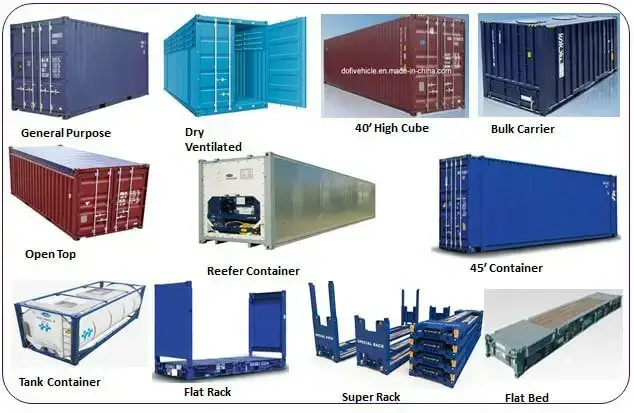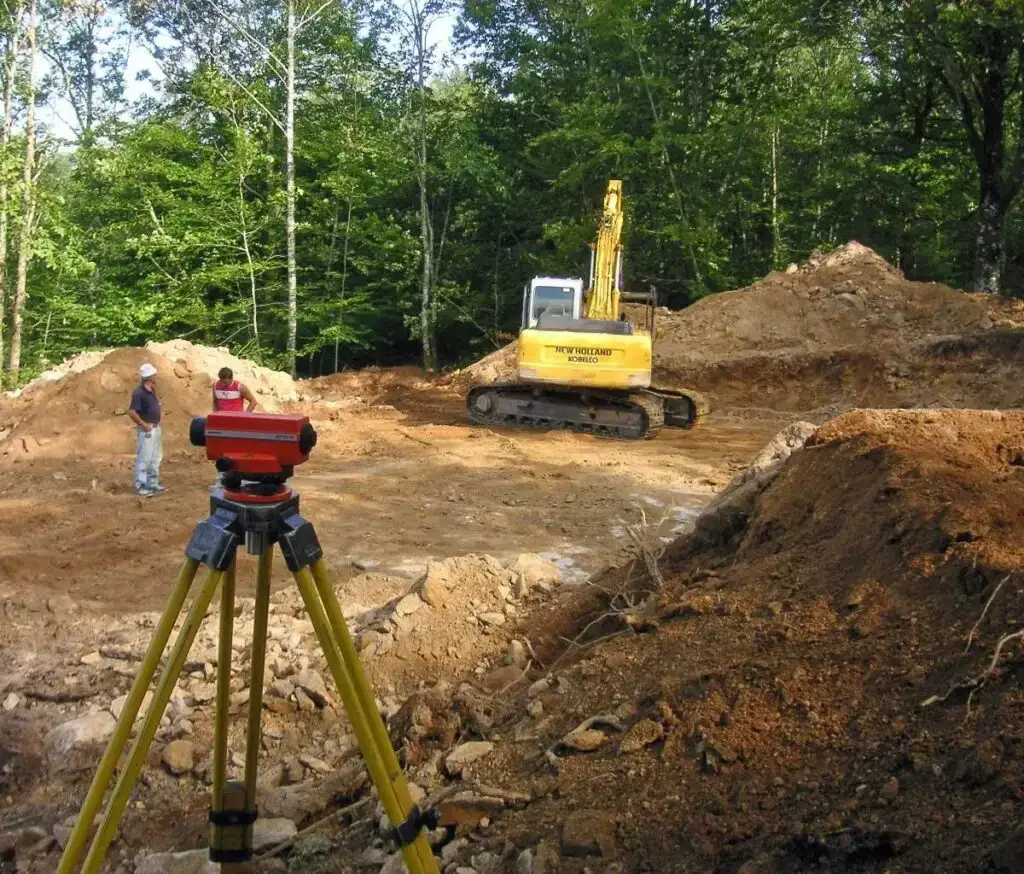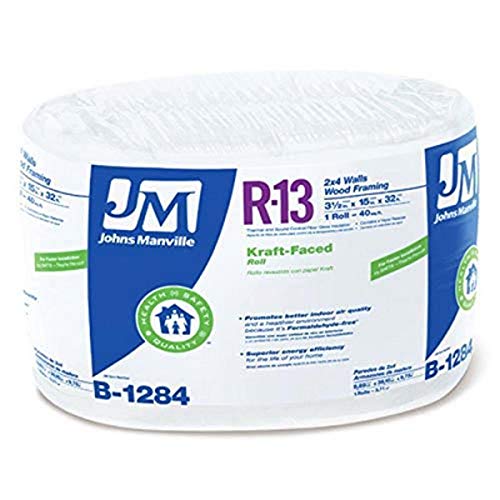Discover the future of housing in the beautiful state of South Carolina by exploring the creation of shipping container homes. With their innovative design, functionality, and eco-friendly nature, these homes are revolutionizing the way we think about sustainable living.
In this article, we will delve into the growing trend of building shipping container homes in South Carolina, highlighting their numerous benefits and discussing how they offer a practical solution to both affordability and environmental conservation.
Join us on this exciting journey as we explore the world of shipping container homes and unveil the secrets to creating your very own sustainable and affordable abode in South Carolina.
Table of Contents
Benefits of Building a Shipping Container Home in South Carolina

A. Sustainable Housing
Building a shipping container home in South Carolina offers several environmental advantages:
- Reduces the demand for new construction materials
- Promotes recycling and reusing of shipping containers
- Minimal waste generation during construction
- Decreased carbon footprint
By repurposing shipping containers, you contribute to a sustainable and eco-friendly housing solution.
B. Affordability
Shipping container homes provide a cost-effective alternative to traditional homes:
- Reduced construction costs compared to conventional homes
- Availability of affordable shipping containers
- Savings on maintenance expenses due to the sturdy nature of containers
With a shipping container home, you can achieve your dream of homeownership without breaking the bank.
Read More on Shipping Container Home in Connecticut: Unique Architecture
Understanding Shipping Containers

A. Container Specifications
When building a shipping container home in South Carolina, it is important to understand the different sizes and dimensions of shipping containers:
- Standard shipping containers come in two sizes: 20 feet and 40 feet.
- The dimensions of a standard 20-foot container are approximately 20 feet long, 8 feet wide, and 8.5 feet tall.
- The dimensions of a standard 40-foot container are approximately 40 feet long, 8 feet wide, and 8.5 feet tall.
- There are also high cube containers available, which are taller than standard containers, measuring approximately 9.5 feet in height.
In addition to their sizes, shipping containers are known for their structural integrity and durability:
- Shipping containers are made of corrugated steel, which gives them strength and rigidity.
- They are designed to withstand harsh weather conditions and are built to be stackable, allowing for efficient transportation.
- Shipping containers are also highly secure, with sturdy doors and locking mechanisms.
B. Customization Options
One of the advantages of building a shipping container home is the flexibility and customization options available in container home construction:
- Shipping containers can easily be modified to create open floor plans or divide the space into separate rooms.
- They can be stacked or combined in various configurations to create multi-level homes.
- Windows, doors, and other openings can be added to suit the design and functionality needs of the homeowner.
Furthermore, container home construction allows for unique and personalized designs:
- Architects and builders can get creative with materials, finishes, and interior designs to create a one-of-a-kind home.
- Container homes often have a modern and industrial aesthetic that appeals to those seeking a unique living space.
- The exterior of the containers can also be customized with different colors, textures, or claddings.
Read More on Shipping Container Home in New Hampshire – The Perfect Location
Planning and Design

A. Site Selection
When it comes to building a shipping container home in South Carolina, there are several factors to consider when choosing the perfect location:
- Proximity to amenities and services
- Accessibility to roads and highways
- Availability of utilities such as water, electricity, and sewer
- Environmental considerations like soil conditions and drainage
Additionally, it is important to address any zoning or land-use restrictions that may apply to container homes in South Carolina. Familiarize yourself with local regulations and ensure that the chosen location is compliant with these guidelines.
Read More on The Importance of Site Surveys in Construction: Expert Advice
B. Design Considerations
Designing a shipping container home requires careful consideration of various aspects specific to this unique construction method:
- Layout: Determine the desired layout and floor plan to optimize space utilization and meet your specific living requirements.
- Structural Modifications: Plan the necessary structural modifications to the containers to ensure stability and functionality, such as cutting openings for doors, windows, and connecting multiple containers.
- Insulation and Weatherproofing: South Carolina’s climate can be challenging, so focus on good insulation and weatherproofing solutions to maintain comfortable temperatures inside the container home throughout the year.
By paying attention to these design considerations, you can create a container home that not only meets your needs but can also withstand the climate of South Carolina.
Read More on Shipping Container Home VS Prefab Home: Do the Right Thing
Building Codes, Regulations, and Permits
Building Codes and Regulations
When building a shipping container home in South Carolina, it is important to understand the relevant building codes and regulations that apply to this type of construction.
In South Carolina, container home construction falls under the jurisdiction of the local building department. Depending on the specific location within the state, there may be variations in the codes and requirements.
Before embarking on your container home project, it is advisable to consult with the local building department to ensure compliance with the regulations. They will provide you with detailed information on the specific codes that need to be followed.
While container homes are a unique and innovative approach to housing, they still need to meet certain standards for safety and structural integrity. Therefore, it is essential to familiarize yourself with the relevant codes and regulations to ensure that your container home is built to code.
Read More on Is Planning Permission Needed For Container Home? Expert Guide
Construction Permits

Obtaining the necessary permits is a crucial step in the process of building a container home in South Carolina. These permits demonstrate that your construction project meets the required standards and is compliant with local regulations.
Begin by submitting an application for a building permit to the local building department. The application will typically require details about the construction project, including plans, specifications, and site information.
Along with the permit application, you may need to provide documentation such as engineering reports or architectural drawings. These documents help ensure that your container home meets structural design requirements and is safe for occupancy.
Keep in mind that there may be fees associated with obtaining permits for your container home. The cost can vary depending on the size and complexity of your project. It is advisable to inquire about the specific fees during the permit application process.
Once your application is submitted, it will be reviewed by the building department. They will assess whether your construction plans meet the necessary standards and regulations. Upon approval, you will receive the building permit, allowing you to proceed with the construction of your container home.
Remember to keep the building permit readily accessible at the construction site as it may be required for inspections throughout the building process.
Read More on Shipping Container Home in NSW: A Cost-Effective Living
Construction Process
A. Foundation and Site Preparation
When it comes to building a shipping container home in South Carolina, the foundation is a crucial element. There are several foundation options that are suitable for container homes in this area.
- Concrete Slab Foundation: This is the most common and cost-effective foundation choice. It involves pouring a reinforced concrete slab on level ground to support the container.
- Pier Foundation: This foundation consists of concrete piers or footings that are strategically placed to support the weight of the container. It is ideal for sites with uneven ground or areas prone to flooding.
- Basement/Foundation Crawlspace: For those looking for additional storage or living space, a basement or foundation crawlspace can be included in the construction process. This requires excavation and the installation of proper drainage systems.
In addition to the foundation, site grading and preparation are essential steps to ensure a stable and level construction site. The site needs to be cleared of any vegetation, debris, or obstacles. Depending on the terrain, grading might be necessary to level the land before proceeding with the foundation.
Read More on 11 Mistakes to Avoid While Building a Container Home
B. Container Construction and Modification

Converting shipping containers into livable spaces requires careful planning and meticulous execution. Here are the steps involved in the container construction and modification process:
- Inspection: Thoroughly inspect the shipping container for any damage, rust, or structural issues that may need to be addressed before proceeding. Ensure that it is watertight and structurally sound.
- Cutting and Framing: Cut out openings for doors, windows, and other desired architectural elements. Install a steel frame or wooden studs to reinforce the container’s structure and create a framework for interior walls.
- Electrical and Plumbing: Plan and install electrical wiring and plumbing systems according to your desired layout. This may involve hiring professionals depending on your level of expertise.
- Insulation: Proper insulation is crucial in South Carolina’s climate to maintain comfortable indoor temperatures. Insulate the container using materials such as spray foam, rigid foam boards, or mineral wool insulation.
- Interior Finishing: Finish the interior walls, floors, and ceilings with your preferred materials, such as drywall, plywood, or reclaimed wood. This is your chance to add personal touches and create a cozy living space.
Throughout the container construction and modification process, ensure that you have the necessary tools and materials. These may include welding equipment, cutting tools, insulation materials, paint, screws, and adhesives.
C. Insulation and Weatherproofing
In South Carolina’s climate, proper insulation and weatherproofing are essential to ensure energy efficiency and protect your container home from extreme temperatures and moisture. Consider the following insulation materials and techniques:
- Spray Foam Insulation: This insulation method provides excellent thermal resistance and also acts as an air barrier, preventing drafts and air leakage.
- Rigid Foam Board Insulation: These boards are easy to install and offer good insulation value. They can be attached to the interior or exterior walls of the container.
- Mineral Wool Insulation: This non-combustible insulation material is resistant to fire and offers good soundproofing capabilities. It can be used between interior walls or in the ceiling.
Additionally, ensure that your container home is properly weatherproofed. This includes sealing any gaps, applying weather-resistant coatings, and installing appropriate roofing materials to protect against rain and wind.
| Image | Product Title | Features | Price |
|---|---|---|---|
 | Buy on Amazon | ||
 | Buy on Amazon | ||
 | Buy on Amazon |
Cost and Budgeting
A. Cost Breakdown
Building a shipping container home in South Carolina involves several costs that you need to consider. Here is a comprehensive breakdown of the expenses:
- Land purchase or rental fees
- Architectural and engineering fees
- Shipping container acquisition
- Site preparation and foundation
- Building permits and inspections
- Utilities installation
- Construction materials
- Interior finishing
- Plumbing and electrical work
- Insulation and HVAC system
- Windows and doors
- Roofing and siding
- Exterior landscaping
It’s important to note that costs can vary depending on factors such as the size of the home, desired finishes, and site conditions.
When budgeting for your shipping container home, consider allocating funds for unexpected expenses or contingencies, as surprises may arise during the construction process.
Additionally, you may opt for cost-saving measures by using recycled or repurposed materials, sourcing locally, or DIYing certain aspects of the project.
Read More on How to Build A Storm Shelter Out Of A Shipping Container
B. Financing Options
Financing your container home construction in South Carolina can be achieved through various options:
- Mortgage loans from traditional financial institutions
- Construction loans specifically for container homes
- Personal loans from banks or credit unions
- Home equity loans or lines of credit
- Government programs offering grants or subsidies
- Crowdfunding or peer-to-peer lending platforms
It’s recommended to research and compare the terms, interest rates, and eligibility criteria of these financing options. Seeking guidance from a financial advisor or mortgage broker can also help you find the most affordable and suitable choice for your container home project.
Remember to gather all the necessary documents, such as construction plans and cost estimates, to present to lenders or grant providers to increase your chances of securing financing.
By exploring these financing avenues and utilizing cost-saving strategies, you can make building your shipping container home in South Carolina a reality within your budget.
Read More on How To Finance A Container Home: All You’ll Need
Real Estate Market in South Carolina
South Carolina is a state with a diverse and thriving real estate market. From coastal properties to charming small towns, there is something for everyone in this beautiful state.
Currently, the real estate market in South Carolina is seeing steady growth. The demand for homes is high, and prices continue to rise. This presents a great opportunity for those considering building a shipping container home in South Carolina.
Opportunities and Challenges for Container Homes
Container homes offer a unique and exciting housing option in South Carolina. However, there are a few specific opportunities and challenges to consider.
Firstly, South Carolina has a strong focus on sustainability and eco-friendly living. Container homes align perfectly with these values, as they are built using repurposed materials and have a smaller environmental footprint. This makes container homes an attractive option for buyers who prioritize sustainability.
Secondly, container homes can be an affordable alternative to traditional housing options in South Carolina. The cost of building a container home is often lower compared to traditional construction, making it an appealing choice for budget-conscious individuals or families.
However, it’s important to note that container homes may face some challenges in regard to zoning regulations and building codes. While South Carolina has relatively lenient regulations, specific requirements and permits may still be necessary. It is essential to consult with local authorities and professionals to ensure compliance with all necessary regulations.
Growing Interest in Container Homes
Container homes are gaining popularity within the South Carolina real estate market. Buyers are increasingly drawn to the unique and modern designs of container homes, as well as the opportunity to live in an eco-friendly and sustainable manner.
Furthermore, container homes offer a great deal of flexibility in terms of customization. Buyers can design their container homes according to their unique preferences and needs, creating a truly personalized living space.
With the current trend towards minimalism and sustainable living, container homes have become a desirable option for many South Carolina residents.
Read More on Building a Container Home in Colorado: Unique Housing Solution
Conclusion

Building a shipping container home in South Carolina offers numerous benefits and advantages. Throughout this content plan, we have explored the various aspects and considerations involved in this unique housing option. Let’s recap the key points discussed:
- Shipping container homes provide affordability, durability, and sustainability.
- A thorough understanding of shipping containers is crucial for successful construction.
- Proper planning and design ensure functionality and comfort in your container home.
- Adhering to building codes, regulations, and obtaining necessary permits is essential.
- The construction process involves site preparation, container modification, and the assembly of various systems.
- Having a realistic budget and understanding the costs involved is vital.
- The real estate market in South Carolina presents opportunities for container home owners.
In conclusion, building a shipping container home in South Carolina is a smart and innovative choice. Not only do you have the chance to create a unique and personalized living space, but you also contribute to the sustainability of the environment.
With the benefits of affordability, durability, and adaptability, container homes offer a versatile and stylish housing solution. Take advantage of South Carolina’s favorable real estate market and embrace the opportunity to build your dream container home today!
Read More on Building A Container Home In Massachusetts: A Modern Solution

